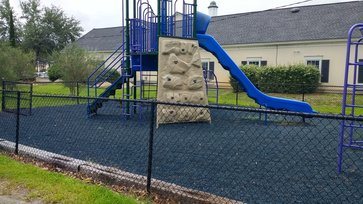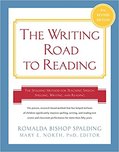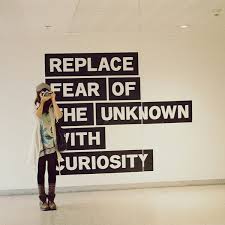 As I mentioned earlier, I was dismayed to find that “college prep” had taken on a lowest common denominator reputation in local high schools. This school takes a classical approach to this term! Our expectation of students is that they are capable of learning more, applying that learning, and reaching high quality standards. LEARNING MORE Part of learning more is accomplished through our longer school day, but truthfully, most of that learning will be of the social interaction variety during our social interaction labs (AKA recesses). Recesses, especially longer ones, help kids to get the blood flowing to their brains and the wiggles out of their system. We have a great playground facility and athletic field to use and we plan on using them! Recesses allow the children to be outside in the dappled sunlight and to experience a wide range of sensory input which is essential for enhancing creativity and curiosity. One of our developmental goals is to replace the FEAR of the UNKNOWN with ACTIVE CURIOSITY! Love this poster! (Click read more to see it.)  However, another way learning occurs is through teacher guided instruction and independent efforts of students. Like Jennifer Gonzalez points out on her blog back in 2013, there is much we can learn from a Montessori elementary classroom. Our goal is to have the same quiet organized excitement in our classrooms. We will have centers that students will use for independent learning and which aspects and when they do the centers will be up to student choice. These centers will reinforce lessons learned and allow for spiral learning (i.e. review, preview, and extension supporting our afternoon theme units) and will be for both language arts and math. However, the main level of heightened expectations comes from our curriculum resources. Language Arts Curriculum Resources Because our students are in multi-age and graded classrooms, I looked for a curriculum that spanned grades. I decided to adopt a program that has provided strong language arts support for all areas of language arts (Farnham-Diggory, 1992[1]) and had consistently provided results that are significantly better than other means (Aukerman, 1984[2]). This is the Spalding Method and the use of The Writing Road to Reading. It resulted in average grade level scores in first grade of 2.8 and in second grade of 3.76 and in third grade of 5.24 (pages 545-546). It is supported by the International Multisensory Structured Language Education Council and the International Dyslexia Association. See more on the empirical support for the program at their website (http://www.spalding.org/wrtr-program/research/518-supportive-research). The Writing Road to Reading was first published in 1957 and is now in its sixth edition. The Spalding Education International has a certificate program for both teachers and schools. Our teachers will become certified after our first year (it requires using the program for a year) and the school will become qualified then too. All future teachers at the school will also be required to become certified if not already certified.
This program includes instruction in cursive writing which is also one of the required topics at our school. It also noted that learning and “singing” nursery Rhymes produces better readers which aligned with one of our themes in the PrePrimary class (nursery rhymes linked to our theme units as memory and action song components see their winter newsletter from 2014. Another great link to our curriculum design of having supporting reading for theme units part of our morning activities is in reading. After the use of primers in Kindergarten and 1st grade, fine literature and informational text is used for second grade and above. This fits with our goal of having our afternoons be linked with the mornings! All in all. This program dovetailed nicely with our goals and is an obvious one for us to use! Dr. B Janice Black, Ed. Sp., Ph. D. [1] Farnham-Diggory, S. (1992), Cognitive Processes in Education. 2nd ed., New York: Harper Collins Publishers, Inc. [2] Aukerman, R. C. (1984), Approaches to Beginning Reading, . 2nd ed., New York: John Wiley & Sons, Inc
0 Comments
Leave a Reply. |
Founder's Blog by
|
|
We are an independent non-profit private school in the Myrtle Beach area that operates with rigorous academic standards, a commitment to developing all aspects of a child, an orientation that is respectful of religious organizations, and has a strong honor code.
A Project of the Social Good Fund | www.socialgoodfund.org
|
Proudly powered by Weebly
|

 RSS Feed
RSS Feed
